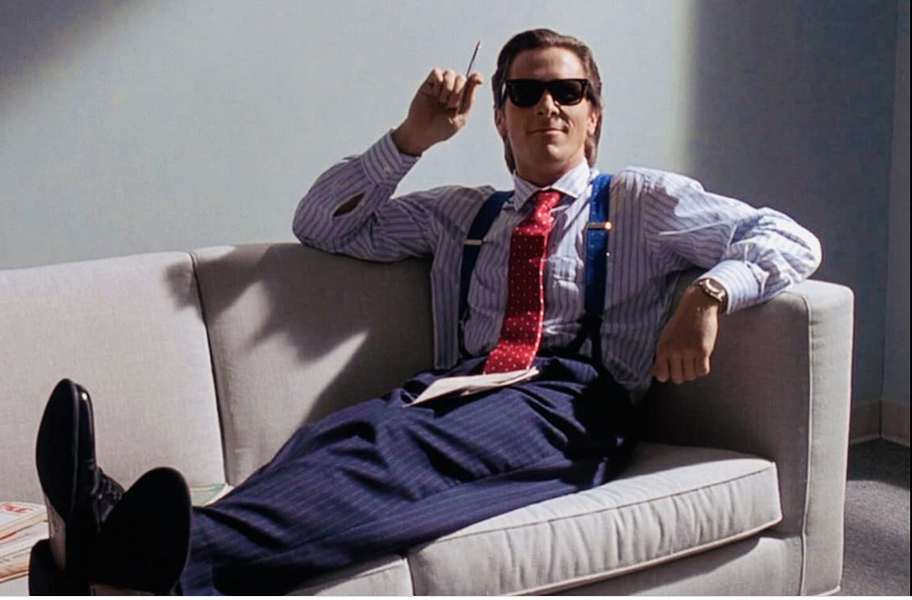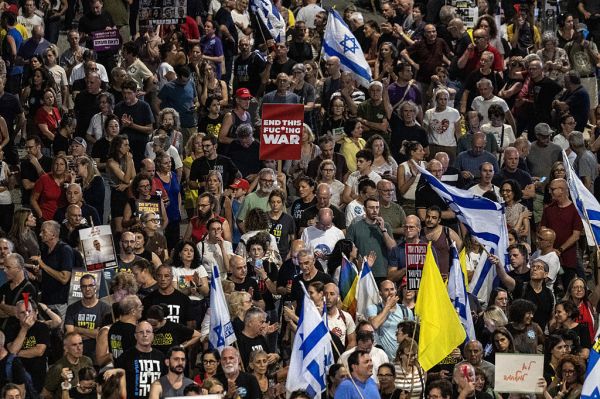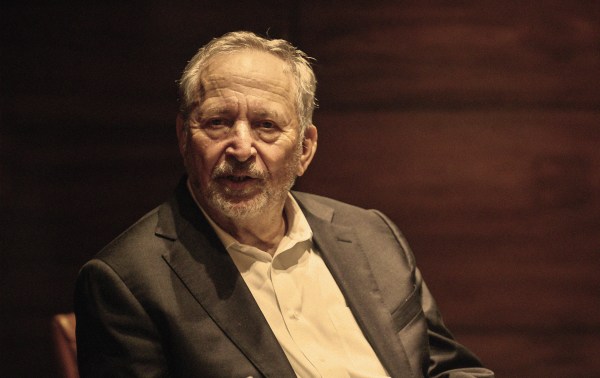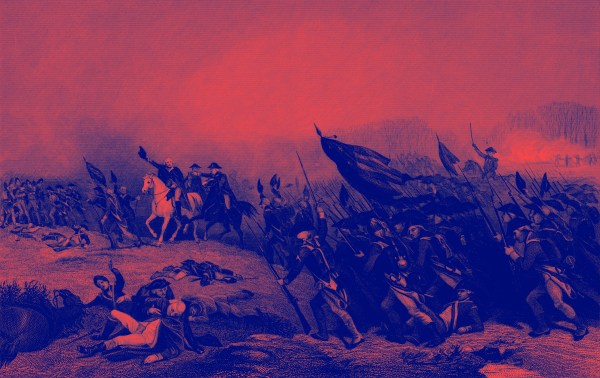In 1991, Bret Easton Ellis became the most hated man in America.
Granted, he was hardly a darling of the Moral Majority before that. His first novel, Less Than Zero, which he published in 1985 while still a college student, met with controversy for its portrayal of a decadent youth culture characterized by drug abuse, loveless sex, and an overriding sense of purposelessness. All that was outweighed by the book’s success; it became a New York Times bestseller despite minimal promotion and propelled Ellis to global fame as a member of the “literary Brat Pack.”
Though Less Than Zero’s equally lurid successor, The Rules of Attraction, maintained Ellis’ grasp on the zeitgeist, it was too comedic to elicit real shock. When Ellis, having had only a taste of public hostility, relocated from Los Angeles to New York City in early 1987 to produce his third novel, he was hardly prepared for the vitriol that would threaten his life four years later.
Reagan-era Manhattan—alternately dazzling and desolate—inspired Ellis immediately. By the spring, he had settled into a condo in the East Village and was attempting to adhere to a stable writing routine. The manuscript that became American Psycho was originally conceived as identical in approach to Less Than Zero, with the setting transposed from Sherman Oaks to Wall Street. It would concern a young banker, drifting aimlessly through an empty life of debauchery and avarice, who would abandon the city to pursue something more meaningful at the novel’s end.
Ellis researched the book by immersing himself in the yuppie culture of the era. He began shadowing Wall Street businessmen, all of whom had recently graduated from top business schools and were earning enormous salaries. Over dinner one evening, as his cackling companions flaunted their luxurious suits, watches, and summer vacation rentals, Ellis had an epiphany: The protagonist of his new novel would be a serial killer losing his already tenuous grip on reality, one who would present his murders to the reader in uncompromising detail.
With that realization, Ellis began to write feverishly, and completed American Psycho in December 1989. He believed it was so unconventional that it would not be read by enough people to arouse any broad response at all, never mind one of abject hatred. Once he had submitted the finished draft to Simon & Schuster, reality came crashing down.
Ellis recalled in a 2016 interview that American Psycho experienced “roughly eight months of in-house controversy. … A couple of people had read the manuscript and been offended by it, so there was this ominous indication about how people felt about it.” Simon & Schuster employees were so alarmed by the novel that its release was eventually canceled in November 1990. A second publisher, Vintage Books, purchased the rights to it soon after.
That’s when the real outrage began. As reports of American Psycho’s extreme content circulated before its publication as a paperback in March 1991, Ellis was bombarded with death threats before it even arrived in stores. Critics called it a work of obscenity that deserved to be either censored or banned outright. Roger Rosenblatt implored readers of the New York Times to “snuff” it, while Jonathan Yardley in the Washington Post branded it a “loathsome book” devoid of a “single redeeming quality.”
Ellis told Vogue in 2019 that a lone positive review by Henry Bean in the Los Angeles Times “caused an outcry at the book review there … they had a three-page letters section of all these people canceling their subscriptions.” Feminist groups were particularly incensed, and conflated the misogynistic behavior of characters in the novel with Ellis’ own attitudes. The Los Angeles chapter of the National Organization for Women, led by Tammy Bruce and supported by activists including Gloria Steinem, advocated a national boycott.
Perhaps Ellis was naïve to expect a passive reception from the public and the press. For American Psycho depicts the American Dream collapsing into the American Nightmare. It contains scenes of depravity so ineffably disturbing that they could never appear in visual art, and remains as stylistically transgressive now as it was upon its release.
At its center is Patrick Bateman, a 26-year-old investment banker. In fastidious detail, he chronicles all aspects of his life, which primarily involves intensive exercise and personal grooming, cocaine-fueled excursions to restaurants and nightclubs, and visits to an office where he performs no actual work. The following passage seems an appropriate illustration:
I worked out heavily at the gym after leaving the office today but the tension has returned, so I do ninety abdominal crunches, a hundred and fifty push-ups, and then I run in place for twenty minutes while listening to the new Huey Lewis CD. I take a hot shower and afterwards use a new facial scrub by Caswell-Massey and a body wash by Greune, then a body moisturizer by Lubriderm and a Neutrogena facial cream. I debate between two outfits. One is a wool-crepe suit by Bill Robinson I bought at Saks with this cotton jacquard shirt from Charivari and an Armani tie. Or a wool and cashmere sport coat with a blue plaid cotton shirt and pleated wool trousers by Alexander Julian, with a polka-dot silk tie by Bill Blass.
Leaving aside Bateman’s obsessiveness, he ostensibly embodies everything that the average American male would aspire to emulate. Fabulously wealthy and formidably intelligent, he has a lavish Upper West Side apartment and two Harvard degrees to his name. He’s impossibly handsome, toned, and tailored; his fiancé is similarly beautiful;, and his secretary is hopelessly enamored with him.
But beneath his outwardly charming surface, Bateman is a mass murderer—a lunatic driven by resentment of a society that affords him every superficial pleasure. Protracted scenes of increasingly sickening violence punctuate the novel as his derangement escalates. He begins to relish degrading his victims, and takes especially sadistic delight in brutalizing women. Yet he describes these crimes with the same numb detachment as his favorite pop songs—his first kill, in fact, is followed by a critique of Phil Collins-era Genesis. To Bateman, everything is material. He is as compelled to dismember prostitutes as he is to line his bathroom cabinets with beauty products, but neither of these habits bring him any fulfillment.
Grisly though Bateman’s main hobby may be, American Psycho is really a coal-black comedy—an elaborate satire of the hollowness of a milieu dedicated solely to consumerism. The yuppies that permeate its pages are indistinguishable, defined only by the food they eat, the tanning salons they frequent, and the brands in which they dress. Bateman separates his peers by scrutinizing their outfits, for they have no real characteristics; their tastes, attitudes, and perspectives on world affairs are all received from television shows and magazines. In turn, Bateman evades culpability for his crimes through being routinely misidentified by those around him. After all, there is no meaningful distinction between him and his peers.
Bateman spends pages deadening the reader by recounting vapid conversations and interminably listing brand names to reinforce Ellis’ point. But American Psycho is a farce built upon set pieces and wry repartee, not simply postmodern tricks.
Hysterical scenes abound as the narrative loses its coherence and Bateman’s madness deepens. He becomes infatuated with Bono at a U2 concert, rants wildly at a waiter while dining with a former lover (“You don’t have any sun-dried tomatoes. The restaurant does. You don’t have the poblano chilies. The restaurant does. Just, you know, clarify.”), and manically attempts to find a tube of “goddamn water-soluble spermicidal lubricant” while cheating on his fiancé.
All of this amounts to a literary experience that has never been replicated. American Psycho remains hilarious, largely because the hyper-materialistic world that it lampoons never truly went away. Rather, it became more opulent and exclusive.
In White (2019), his first book of non-fiction, Ellis muses that today’s gentrified Manhattan, dotted with multimillion-dollar apartments, resembles “American Psycho on steroids,” a “moated gated community filled with only rich people and tourists.” Bateman’s prized Armani suits have never been more expensive, and iPhones have superseded Walkmans, but conspicuous consumption endures—only its aesthetics have changed.
If American Psycho were published in 2021, it seems unfathomable that it would attract widespread scorn or that mass campaigns to censor it could even occur. Certainly, there would be criticism of its most depraved sections (Bateman inserting a rat into a kidnapped woman comes instantly to mind), but mores have changed considerably. This is a cultural moment in which pornography and gore-soaked horror movies are never more than a finger tap away. It is also a moment of atomization—streaming services now enable us to watch, read, and listen to whatever we please while ignoring everything that holds no interest to us. In effect, we can each create our own culture, and if culture is individualized, then broad movements within it cannot exist.
But American Psycho was released in the early years of modern digitization, and controversy made Patrick Bateman unavoidable. Mary Harron’s 2000 movie adaptation of the novel came when dial-up connections were the norm, and brought Bateman to life through a masterful performance by Christian Bale. Images of Bale in the role—in which he is usually either clad in a Hermès tie and pinstripe suit, or naked, caked in blood, and wielding a chainsaw—are now ingrained in the American mind. Given form, Bateman has come to symbolize the inevitable outcome of freedom for its own sake, unmoored from virtue. Today, his name is a byword for excess.
Bateman, however, was always more than a twisted parody of yuppiedom. In recent years, Ellis has admitted that the character was principally created as an avatar of his own despair; an emblem of male anxiety and the agony of conformity.
“(Bateman is) really infused with my own pain and what I was going through as a guy in his 20s, trying to fit into a society that he doesn’t necessarily want to fit into but doesn’t really know what the other options are,” Ellis told Rolling Stone in 2016. Earlier, he revealed that “American Psycho is a book about becoming the man you feel you have to be, the man who is cool, slick, handsome. … It’s about lifestyle being sold as life, a lifestyle that never seemed to include passion, creativity, curiosity, romance, pain. Everything meaningful wiped away in favor of looking good, having money, having six-pack abs. … No one can really live up to these ideals, so there’s an immense amount of dissatisfaction roiling through the collective male psyche.”
“I want to fit in,” Bateman tells an ex-girlfriend when she asks why he refuses to leave the job he despises. He assumes that adhering to a popular image of success will fulfill him; that acquisitiveness, rather than the pursuit of happiness classically defined, is the heart of the American ideal.
This misguided belief remains prevalent, and putting it into practice causes Bateman to self-destruct. His Grecian physique and unlimited access to commodities conceal a gnawing emptiness; a void of meaning that the artificial cannot fill. Surrounded by “friends” who are barely aware of his existence, Bateman is deprived of real connection or intimacy. “I just want to be loved!” he wails in one scene while attempting to cannibalize a victim, suddenly overcome by the futility of an existence from which he cannot break away.
It is difficult not to ponder how Bateman would live if transported to the present. Undoubtedly, he would be addicted to modern technology. The internet would afford him access to a veritable wonderland of pornography, and a virtual marketplace where every imaginable good is on sale.
It would also allow him to embrace a culture of rampant narcissism on social media, fueled by the advent of Instagram and filters. On American Psycho’s 25th anniversary, Ellis observed that Bateman would take particular delight in online trolling, and noted that the novel already resembles “one man’s ultimate series of selfies.” Armed with an iPhone, Bateman could stalk his victims virtually while harassing them with bigoted memes and grotesque photoshops. He would find lifestyles of unprecedented glamour to emulate, but perpetually comparing himself to privileged figures from across the globe, far beyond the elite social circle that he already despises, would compound his isolation.
Outside of technological advancements, Bateman’s life in contemporary Manhattan, now over a decade removed from the crash, would be essentially unchanged. Gourmet restaurants remain ubiquitous, Hamilton is the new Les Misérables, and palatial skyscrapers continue to tower over the city while encampments form below. With his wardrobe and cultural awareness updated, Bateman would be as embedded in the American upper class today as he was in 1987. Unfortunately, he would also be just as insane.






Please note that we at The Dispatch hold ourselves, our work, and our commenters to a higher standard than other places on the internet. We welcome comments that foster genuine debate or discussion—including comments critical of us or our work—but responses that include ad hominem attacks on fellow Dispatch members or are intended to stoke fear and anger may be moderated.
With your membership, you only have the ability to comment on The Morning Dispatch articles. Consider upgrading to join the conversation everywhere.